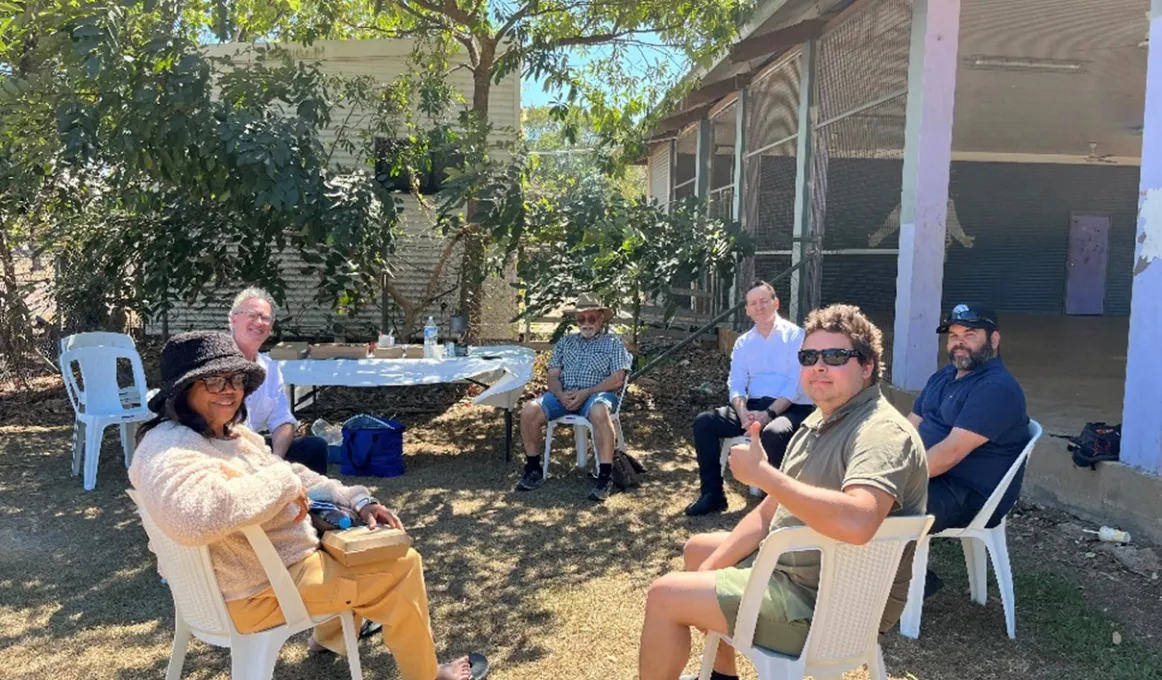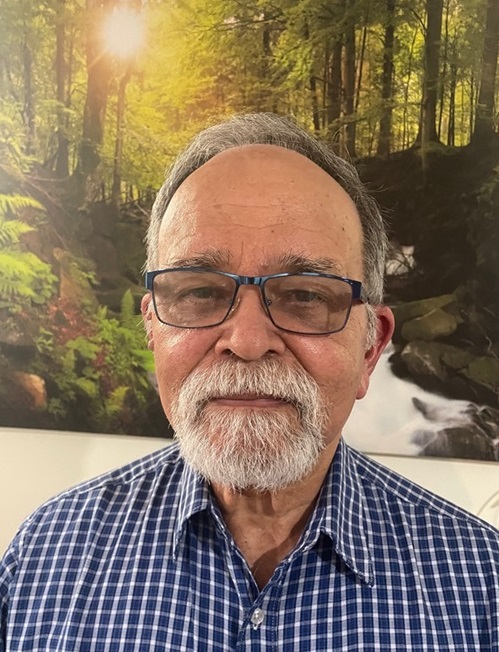Keith Truscott’s long road back ‘home’

For many years, Stolen Generations survivor Keith Truscott struggled to find his identity. He found strength in his family, his work and giving back to community.
Photo (from left to right): At the Personal Acknowledgement: Stephanie Truscott, Russell Stubbs, Keith Truscott, Bruce Taloni (Government senior representative), Jesse Truscott, Jesse Jnr Truscott
For many years, Stolen Generations survivor Keith Truscott felt like an outsider.
As a teenager he knew he was different to his adopted family in many ways, but found it difficult to reconnect with his biological family. Keith says he was ‘missing in action’ for about 5 years as a young adult, trying to understand and accept his childhood and identity.
From about age 19, I had to work through my anger and confusion. I blamed the economic system, everyone, everything. I wrestled with my own loyalties and a lot of confusion.
Keith was taken from his mother as a 10-day-old baby and placed in the Retta Dixon Home in Darwin.
His removal was a result of past government policies that sought to assimilate Aboriginal children into white society. Retta Dixon Home was set up by the Aborigines Inland Mission (AIM) to care for ‘part-coloured’ children under their charge.
At 8 years old, Keith was fostered to a white couple, without being told that he would not return to the Home where he had been his entire life and where he lived with his younger brother Kenny. Keith’s name was also changed when he was moved.
“Just before I left to go ‘down South’, everyone was calling me Keith Williams, so that I would get used to my new name,” Keith said.
“In fact, I had my name changed 5 times before I was 13 years old. I had my mother’s name, my father’s name and the names of my foster and adoptive families. I just couldn’t understand it as a boy,” Keith said.
I just didn’t know where my loyalties should be.
Keith recalls leaving Retta Dixon Home as a young boy.
“It was like a new adventure. But I didn’t think, or was told, that I would never come back to live in the Home again.” Keith remembered.
Keith’s father was not told about his movements or his later adoption by another family, despite the financial support he provided after Keith was removed.
“Dad came to the Mission and found that I was not there. He was angry but told my going ‘down South’ was ‘for my good’,” Keith said.
While living with non-Indigenous families as a child, Keith could not meet with any other Indigenous people.
“I started missing my Indigenous people,” he said.
“In fact, in my ten years away from Darwin, I could count on ten fingers how many Indigenous people I saw and met. My Aboriginal identity was being starved,” he reflected.
At 18, Keith was allowed to return to the NT and make contact with his biological parents. However, it took some time for him to be ready to reconnect with his family and personal history.
I didn’t see my biological parents or my adopted parents for a long time. I believe I suffered a form of post-traumatic stress.
It was a dark era for Keith, but he did eventually build a strong relationship with his biological parents. Keith says he felt like an outsider initially, but over time he began to see the similarities between his parents and himself.
“My mother has this wonderful joy for living and a great sense of humour. My father had a fantastic work ethic,” Keith said.
Keith found inspiration in these attributes in his parents and as an adult has worked to develop those qualities in himself. He’s been careful to really ‘be with’ his own children despite his own childhood disconnection and has built a strong 30 year marriage.
He’s also had professional success, gaining a PhD in Business Studies and leading his community in WA as a Pastor. Keith believes it’s important to give back to other Indigenous people who may also have had difficult experiences.
“One way to help our people is to understand the system and help our people through it” he says.

Photo: Keith Truscott
Keith was an applicant to the Territories Stolen Generations Redress Scheme, which provides support to Stolen Generations survivors who were removed from their families or communities, and whose removal took place in the Commonwealth Territories.
As a part of the Scheme, Keith received a Personal Acknowledgement of the harm and trauma that his removal caused. A Senior Government official met with Keith to hear and recognise his story.
Keith describes this experience as an “historic event, to have the Government come to see us. It was important recognition and acknowledgement”. He asked for his Personal Acknowledgement to take place on Bagot Community, the location of the former Retta Dixon Home.
“Being back there, I see reconnection with that place as a way of reclaiming my identity,” Keith explained.
Keith’s family; his wife, son and grandson shared his Personal Acknowledgement with him.
I just felt it was important for them to strengthen their identity and understanding of my story, our family’s story. I just wanted them to see the place where I lived back then.
Keith found that having a Personal Acknowledgement has provided him with a sense of resolution. For Keith, the day was one part of a long journey.
“It takes forgiveness and acceptance on both sides to move forward” he said.